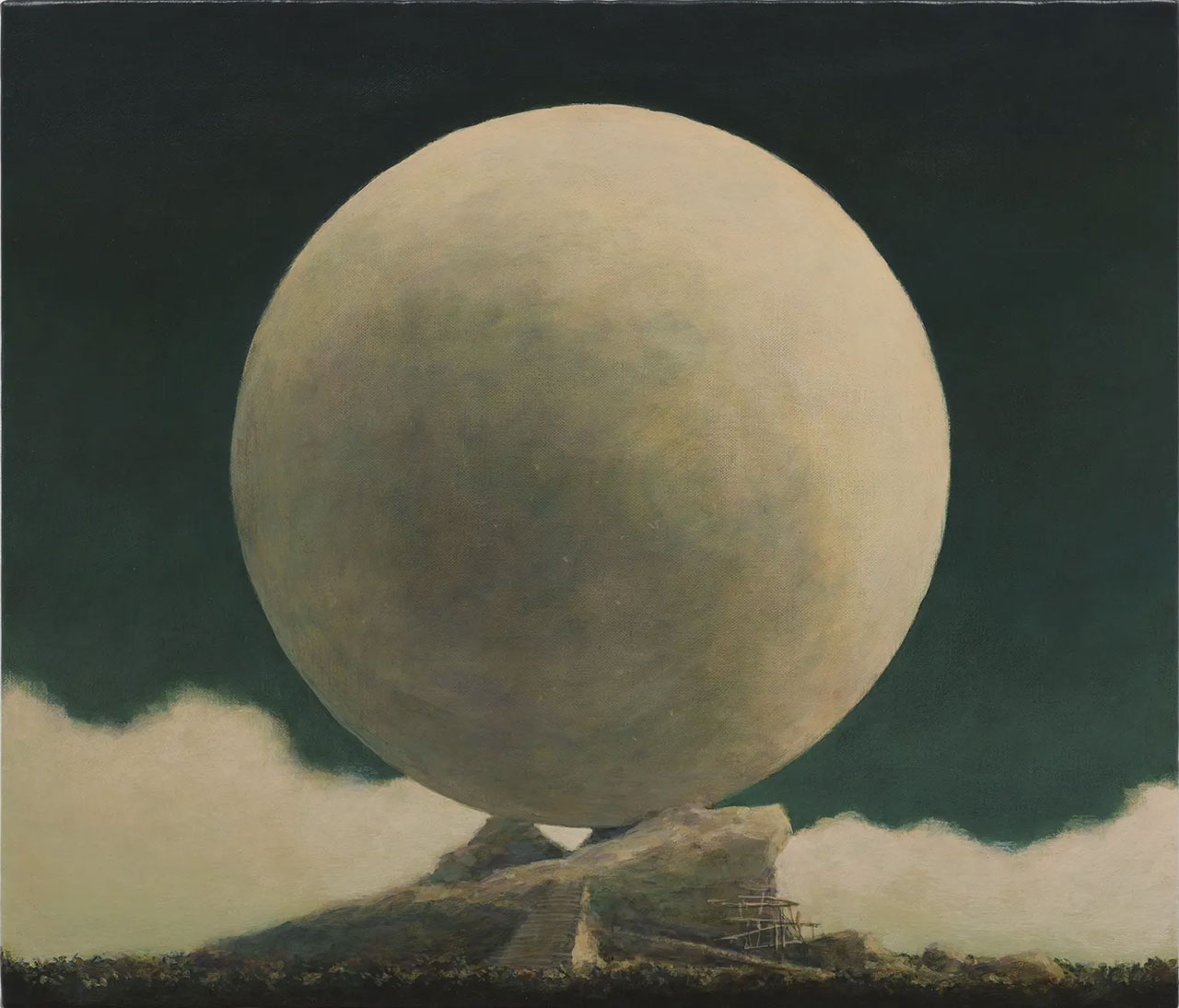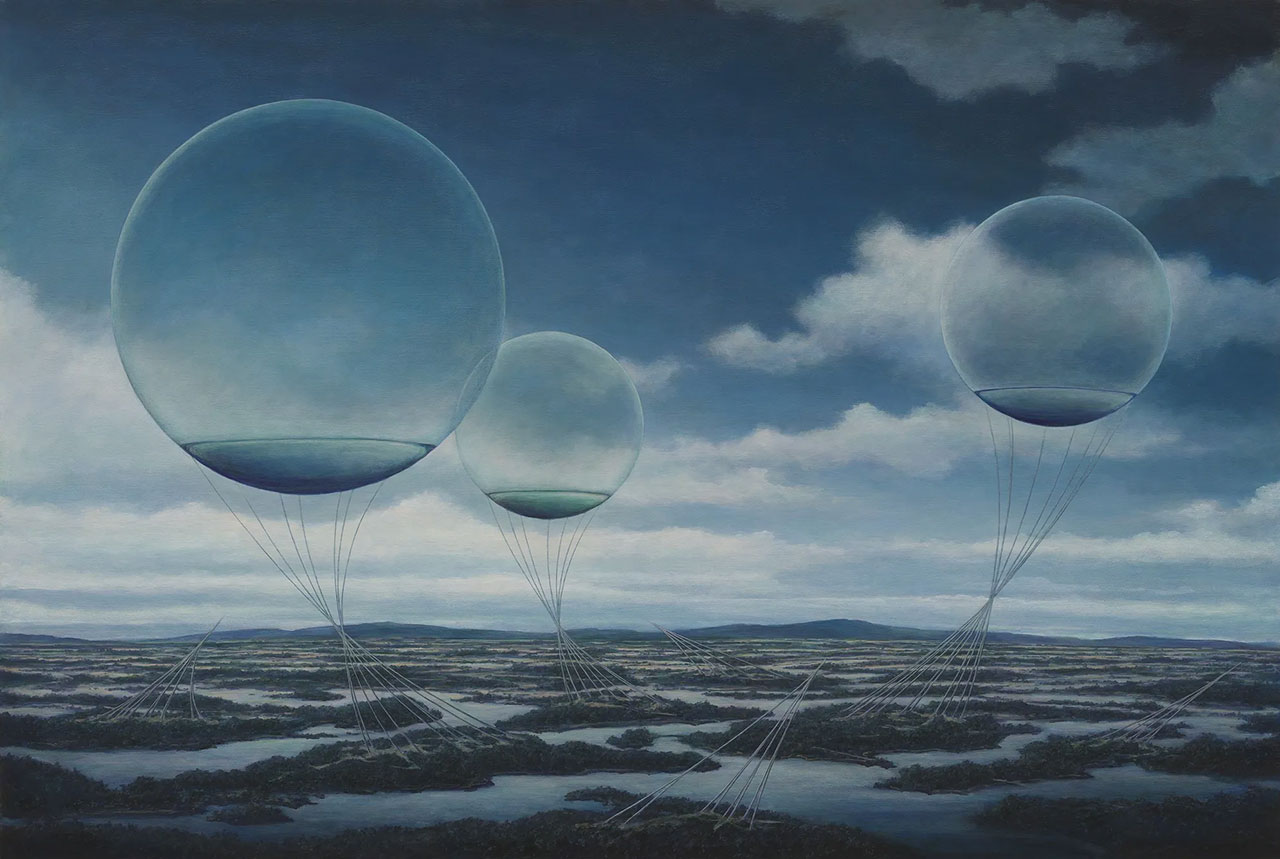ART CITIES: London-Minoru Nomata
Over the past four decades, Minoru Nomata has developed a lexicon of imaginary architectonic and topographical forms to create paintings that transcend specifics of time and place. Characterized by a lack of human presence, Nomata’s visionary paintings combine the familiar with the mysterious and the heroic with the haunting. As the artist states: ‘Painting is an escapist world, but I would like it to be a place to become energized.’
By Efi Michalarou
Photo: White Cube Gallery Archive
Minoru Nomata’s first solo exhibition in London, “Continum” is titled after the artist’s recent series of the same name. Characterized by a lack of human presence, his works depict imaginary architectural structures and enigmatic landscapes that transcend time and place. Conjuring an unfamiliar world that is nonetheless tethered to reality, his visionary paintings evoke a disquieting sense of alienation. ‘Lack, deficiency, insecurity, isolation and the unknown – those so-called negative feelings can also be a creative trigger for me to create something’, the artist has said. The starting point of the artist, who sees ‘imaginary architecture’ as a visual language in its own right, is in Tokyo where he spent his childhood. In a commercial and industrial area where town factories and traditionally designed housing coexist, he became interested in a lexicon of structural elements such as chimneys and steel towers. Especially in Tokyo in the mid-1960s, urban development was actively carried out before the Olympics, and with expectations for a new city raised high in the construction of Tokyo Tower, Nomata seemed to access a glimpse of the future. Rendered with meticulous precision, his scenes often feature towering edifices, intricate skeletal frameworks, spherical forms or wind-powered machinery. The distinctive color palette that Nomata employs is muted and atmospheric – shades of stone-grey, white and sepia interspersed with subdued blues and greens – which enhances the dreamlike quality of his constructed realms. The artist’s use of a relatively flat style and shallow depth of field further enforces this impression of the constructed world, a dimension of which is the theatrical. Bathed in a focused, directional light, structures such as those in Continuum-1 (2024) come to resemble pieces on a stage set against simulated backdrops of hazy cloud and sky formations. Nomata likens his process to ‘daydreaming in an awakened state of reality’; his paintings are not wholly Surrealist, nor can they be described as acts of pure imagination. Though the pervading atmosphere of the works is broadly inspired by science fiction, Nomata has cited the writings of Philip K. Dick, and the music of Brian Eno and Erik Satie as particular sources of inspiration. When working, the artist uses music to ‘amplify’ his imagery, enabling him to ‘imagine something wider, deeper, and more lasting’. The artist draws from a personal archive of over fifty scrapbooks, which are filled with images culled from magazines and newspapers, as well as television programmes that focus on history, mathematics and astrophysics. Beginning by creating sketches from this material, he then transforms these over months, years or even decades. The syncretic visual language that results draws upon art-historical references as wide-ranging as Greek and Roman architecture, the early works of Henri Rousseau, the visual kinetics of Op Art, the machine-age aesthetic of the American Precisionist painter Charles Sheeler and the visions of Giorgio de Chirico and René Magritte. In Nomata’s “Continuum” series, solitary structures arise from low horizon lines, erupting towards the sky. Although many of these might be identified as ‘buildings’, their function and who they serve remains elusive. “Continuum-5” (2023), for example, shows a glass tower set against a smoggy night sky, recalling the vast iron and glass constructions designed for 19th-century World’s Fairs – such as the Crystal Palace in London – but here it is made strange through elongation and its culmination in a bell-like curve. There are no apparent entrances or exits, although the helix of paint that circles the interior could indicate a staircase, albeit with no clear beginning or end. A colossal tree is erected inside, its growth forced into the narrowing upwards trajectory of the glasshouse, while foliage creeps across the exterior planes of the building. As with many of Nomata’s works from this series, a sense of place lessness pervades the scene, which exists somewhere between a dystopian future and a mythic past. Elsewhere in the exhibition, Nomata turns his attention from the aerial to the aqueous, depicting large-scale hydrological formations, such as icebergs, frozen waterfalls and wide vistas of glaciers, as he has done in “Imagine-1” (2018). In “Continuum-12” (2024), two unnaturally spherical ice masses are bisected by the ocean’s surface, the one above the water line tapered into a slight point. The circle motif repeats throughout Nomata’s series – whether as a single, seemingly organic entity in “Continuum 19” (2024), as components in the architectural assemblage of “Continuum-3” (2023) or in the immense transparent balloons tethered to the ground in “Continuum-6” (2024). In “Continuum-21” (2024) Nomata depicts a boat-like construction on the water, seemingly driven by a combination of hydraulic and aerodynamic equipment. In numerous paintings, mechanical interventions protrude or interrupt otherwise serene landscapes, as if to place human endeavor in contention with the sublime force of nature. According to the artist, construction, repair and demolition’ occur simultaneously in his paintings; they confer, too, upon the simultaneity of past, present and future distinct to Nomata’s work. He sets out to create worlds that ‘are not “somewhere”, but “nowhere”, in a position that helps [him] find a place to head for’. Devoid of identifiable temporal or geographical markers as they may be, Nomata’s ambivalent landscapes speak directly to humankind’s long-standing existential concerns about what place, if any, it has in the world.
Photo: Minoru Nomata, Continuum-6, 2024, Acrylic on canvas, 131 x 194.7 cm | 51 9/16 x 76 5/8 in., © Minoru Nomata, Courtesy the artist and White Cube Gallery
Info: White Cube Gallery, 25 – 26 Mason’s Yard London, United Kingdom, Duration: 10/7-24/8/2024, Days & Hours: Tue-Sat 10:00-18:00, www.whitecube.com/
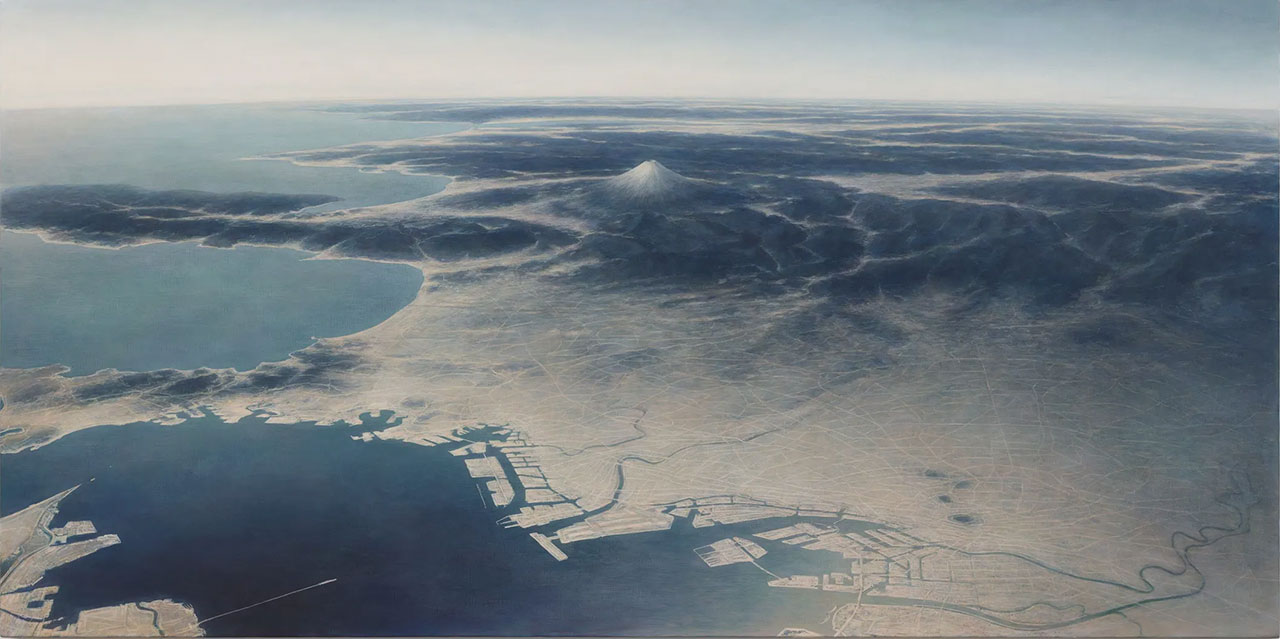
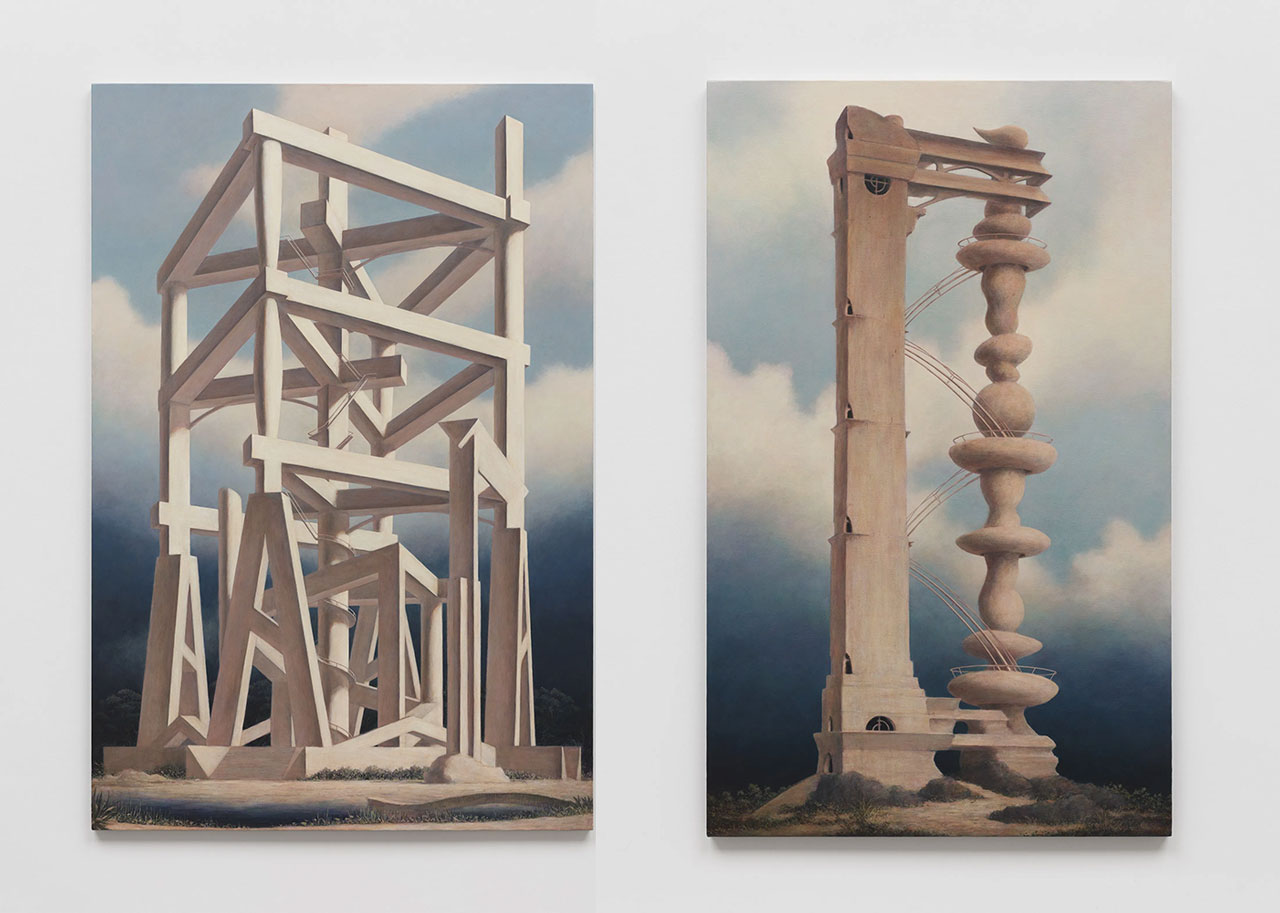
Minoru Nomata, Continuum-3, 2023, Acrylic on canvas, 146 x 89.6 cm | 57 1/2 x 35 1/4 in., © Minoru Nomata, Courtesy the artist and White Cube Gallery
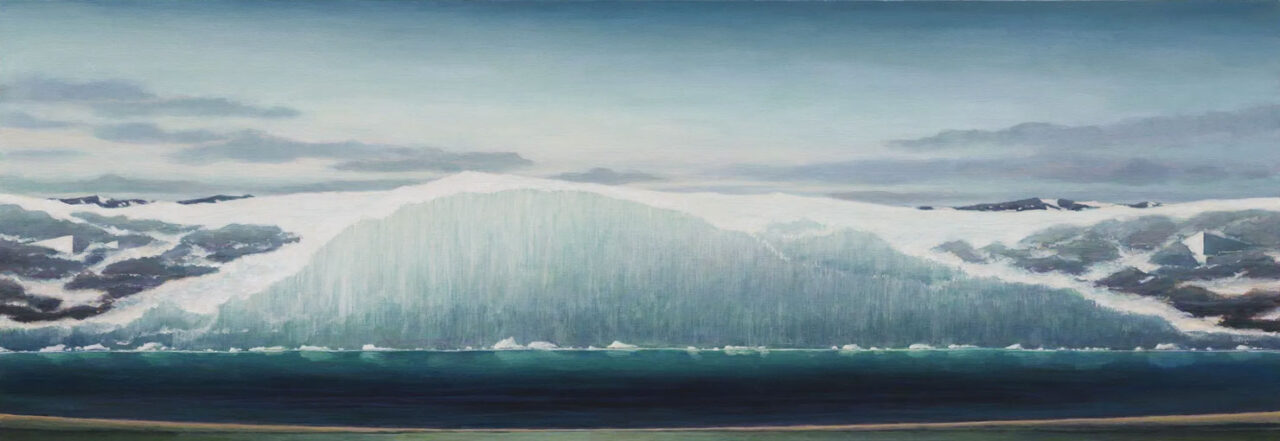
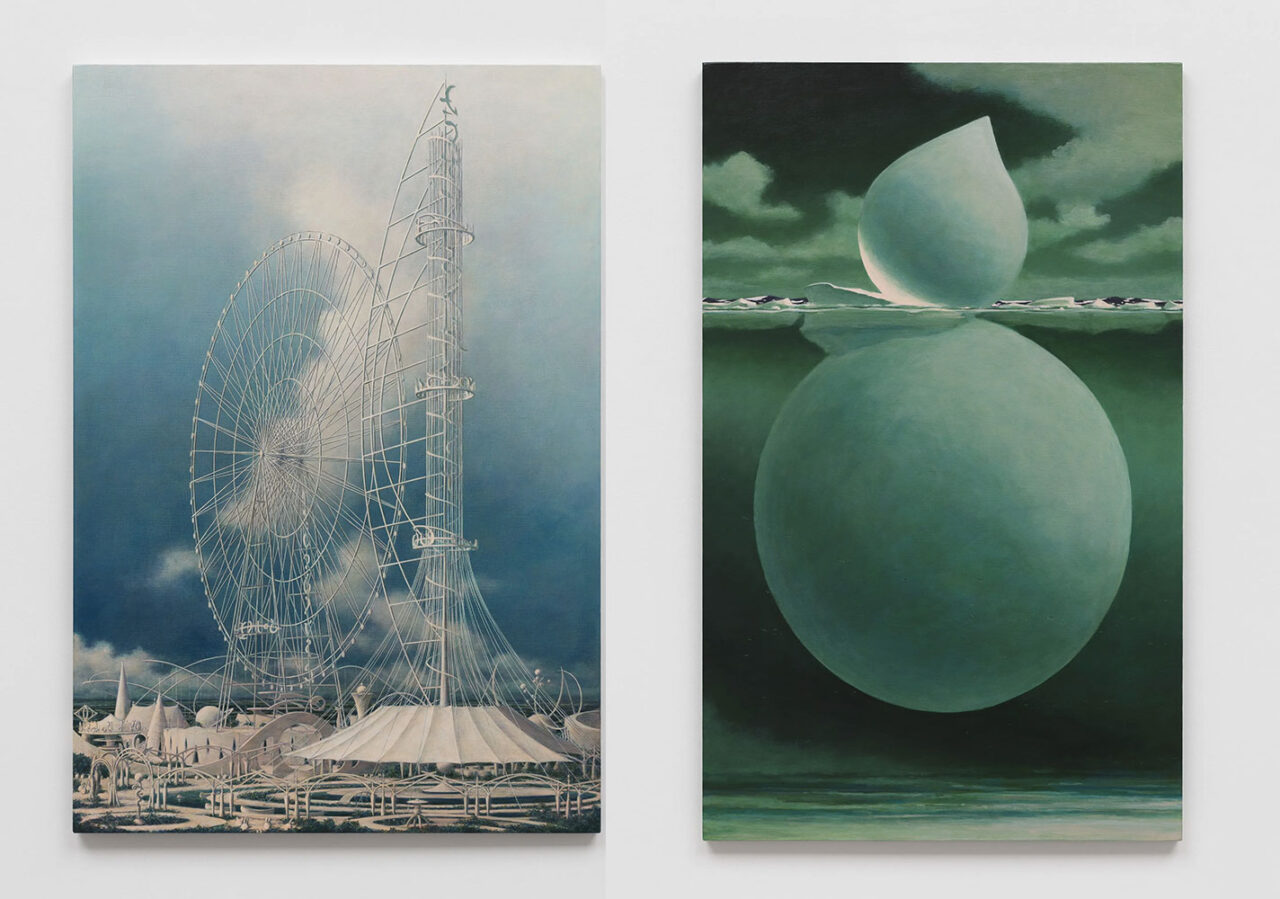
Right: Minoru Nomata, Continuum-12, 2024, Acrylic on canvas, 130.7 x 80.7 cm | 51 7/16 x 31 3/4 in., © Minoru Nomata, Courtesy the artist and White Cube Gallery
